CEO Overconfidence and Shadow-Banking Life Insurer Performance Under Government Purchases of Distressed Assets
Abstract
1. Introduction
2. Literature and Motivation
3. Model Framework
3.1. Assumptions
3.2. Equity
3.3. Efficiency Gain Prediction
3.4. Bankruptcy Prediction
4. Optimal Decisions and Comparative Static Analyses
4.1. Dichotomized Optimal Decisions
4.2. Overconfidence Effects
4.3. Bailout Effects
5. Numerical Analysis
5.1. Numerical Assumptions
- (i)
- We follow Briys and de Varenne (1994) and assume , and for the numerical analysis in the model.
- (ii)
- Let faced by the life insurance company change from (5.50, 300.5) to (6.10, 269) due to the downward-sloping assumption.
- (iii)
- Let change from (2.25, 285) to (3.75, 347) to capture the upward-sloping condition.
- (iv)
- Let the shadow-banking entrusted loans fluctuate from 60 to 80 with the commission rate of .
- (v)
- We assume that , and . The condition of implies that the asset interest rate determined by the life insurance company is greater than the market rate of return from invested in the financial market. The condition of reasonably demonstrates a financial environment where the expected rate of return from the risky investment is greater than the security-market interest rate from buying distressed assets by the government.
- (vi)
- The initial barrier level is assumed to be set which are observed from an empirical barrier average estimated by Brockman and Turtle (2003).
- (vii)
- We assume that the degree range of overconfidence is .
- (viii)
- Let the level of buying distressed assets increase from 0.40 to 0.65.
5.2. CEO Overconfidence Analysis
5.3. Bailout Analysis
6. Conclusions
Author Contributions
Funding
Acknowledgments
Conflicts of Interest
References
- Adams, Renee B., and Daniel Ferreira. 2007. A theory of friendly boards. Journal of Finance 62: 217–50. [Google Scholar] [CrossRef]
- Adrian, Tobias, and Hyun Song Shin. 2009. The shadow banking system: Implications for financial regulation. Financial Stability Review, Banque de France 13: 1–10. Available online: https://publications.banque-france.fr/sites/default/files/medias/documents/financial-stability-review-13_2009-09.pdf (accessed on 23 February 2019).
- Adrian, Tobias, and Mark M. Westerfield. 2009. Disagreement and learning in a dynamic contracting model. Review of Financial Studies 10: 3873–906. [Google Scholar] [CrossRef]
- Alicke, Mark D. 1985. Global self-evaluation as determined by the desirability and controllability of trait adjectives. Journal of Personality and Social Psychology 49: 1621–30. [Google Scholar] [CrossRef]
- Barnes, Michelle L. 2016. Did life Insurers Benefit from TARP or Regulatory Forbearance during the Financial Crisis of 2008–2009? FRB of Boston Working Paper No. 16-24. Available online: https://ssrn.com/abstract=2917098 (accessed on 29 January 2019).
- Ben-David, Itzhak, John R. Graham, and Campbell R. Harvey. 2013. Managerial miscalibration. Quarterly Journal of Economics 128: 1547–84. [Google Scholar] [CrossRef]
- Berry-Stölzle, Thomas R., Gregory P. Nini, and Sabine Wende. 2014. External financing in the life insurance industry: Evidence from the financial crisis. Journal of Risk and Insurance 81: 529–62. [Google Scholar] [CrossRef]
- Berry-Stölzle, Thomas R., Evan M. Eastman, and Jianren Xu. 2018. CEO overconfidence and earnings management: Evidence from property-liability insurers’ loss reserves. North American Actuarial Journal 22: 380–404. [Google Scholar] [CrossRef]
- Breitenfellner, Bastian, and Niklas Wagner. 2010. Government intervention in response to the subprime financial crisis: The good into the pot, the bad into the crop. International Review of Financial Analysis 19: 289–97. [Google Scholar] [CrossRef]
- Briys, Eric, and François de Varenne. 1994. Life insurance in a contingent claim framework: Pricing and regulatory implications. Geneva Papers on Risk and Insurance Theory 19: 53–72. [Google Scholar] [CrossRef]
- Brockman, Paul, and H. J. Turtle. 2003. A barrier option framework for corporate security valuation. Journal of Financial Economics 67: 511–29. [Google Scholar] [CrossRef]
- Calomiris, Charles W., and Urooj Khan. 2015. An assessment of TARP assistance to financial institutions. Journal of Economic Perspectives 29: 53–80. [Google Scholar] [CrossRef]
- Campbell, T. Colin, Michael Gallmeyer, Shane A. Johnson, Jessica Rutherford, and Brooke W. Stanley. 2011. CEO optimism and forced turnover. Journal of Financial Economics 101: 695–712. [Google Scholar] [CrossRef]
- Ceci, Claudia, Katia Colaneri, and Alessandra Cretarola. 2017. Unit-linked life insurance policies: Optimal hedging in partially observable market models. Insurance: Mathematics and Economics 76: 149–63. [Google Scholar] [CrossRef]
- Chen, An, and Michael Suchanecki. 2007. Default risk, bankruptcy procedures and the market value of life insurance liabilities. Insurance: Mathematics and Economics 40: 231–55. [Google Scholar] [CrossRef]
- Choi, Paul Moon Sub, Chune Young Chung, and Chang Liu. 2018. Self-attribution of overconfident CEOs and asymmetric investment-cash flow sensitivity. North American Journal of Economics and Finance 46: 1–14. [Google Scholar] [CrossRef]
- Dyreng, Scott D., Michelle Hanlon, and Edward L. Maydew. 2010. The effects of executives on corporate tax avoidance. The Accounting Review 85: 1163–89. [Google Scholar] [CrossRef]
- Ergungor, Ozgur Emre. 2005. The profitability of bank-borrower relationships. Journal of Financial Intermediation 14: 485–512. [Google Scholar] [CrossRef]
- Fahlenbrach, Rüdiger, and René M. Stulz. 2011. Bank CEO incentives and the credit crisis. Journal of Financial Economics 99: 11–26. [Google Scholar] [CrossRef]
- Giat, Yahel, Steve T. Hackman, and Ajay Subramanian. 2009. Investment under uncertainty, heterogeneous beliefs, and agency conflicts. Review of Financial Studies 23: 1360–404. [Google Scholar] [CrossRef]
- Goel, Anand M., and Anjan V. Thakor. 2008. Overconfidence, CEO selection, and corporate governance. Journal of Finance 63: 2737–84. [Google Scholar] [CrossRef]
- Gómez, Fabiana, and Jorge Ponce. 2018. Systemic risk and insurance regulation. Risks 6: 74. [Google Scholar] [CrossRef]
- Gorton, Gary, and Andrew Metrick. 2010. Regulating the shadow banking system. Brookings Papers on Economic Activity 2010: 261–97. [Google Scholar] [CrossRef]
- Grosen, Anders, and Peter Løchte Jørgensen. 2002. Life insurance liabilities at market values: An analysis of insolvency risk, bonus policy, and regulatory intervention rules in a barrier option framework. Journal of Risk and Insurance 69: 63–91. [Google Scholar] [CrossRef]
- Harrington, Scott E. 2009. The financial crisis, systemic risk, and the future of insurance regulation. Journal of Risk and Insurance 76: 785–819. [Google Scholar] [CrossRef]
- Heaton, James B. 2002. Managerial optimism and corporate finance. Financial Management 31: 33–45. [Google Scholar] [CrossRef]
- Hirshleifer, Dice, and Guo Ying Luo. 2001. On the survival of overconfident traders in a competitive securities market. Journal of Financial Markets 4: 73–84. [Google Scholar] [CrossRef]
- Ho, Po-Hsin, Chia-Wei Huang, Chih-Yung Lin, and Ju-Fang Yen. 2016. CEO overconfidence and financial crisis: Evidence from bank lending and leverage. Journal of Financial Economics 120: 194–209. [Google Scholar] [CrossRef]
- Hong, Jimin, and S. Hun Seog. 2018. Life insurance settlement and the monopolistic insurance market. Insurance: Mathematics and Economics 81: 36–50. [Google Scholar] [CrossRef]
- Hoshi, Takeo, and Anil K. Kashyap. 2010. Will the US bank recapitalization succeed? Eight lessons from Japan. Journal of Financial Economics 97: 398–417. [Google Scholar] [CrossRef]
- Hsieh, Tien-Shih, Jean C. Bedard, and Karla M. Johnstone. 2014. CEO overconfidence and earnings management during shifting regulatory regimes. Journal of Business Finance & Accounting 41: 1243–68. [Google Scholar] [CrossRef]
- Insurance Europe. 2014. Why Insurers Differ from Banks. November 5, Brussels: Insurance Europe. Available online: http://www.insuranceeurope.eu/sites/default/files/attachments/Why%20insurers%20differ%20from%20banks.pdf (accessed on 29 January 2019).
- Insurance Europe and Oliver Wyman. 2013. Funding the Future: Insurers’ Role as Institutional Investors. Available online: www.insuranceeurope.eu (accessed on 3 March 2019).
- Irresberger, Felix, and Ying Peng. 2017. Shadow Insurance Usage and Capital Management in Life Insurance Groups. Fox School of Business Research Paper No. 16-022. Available online: https://ssrn.com/abstract=2754489 (accessed on 29 January 2019).
- Jeffers, Esther, and Claudia Baicu. 2013. The Interconnections Between the Shadow Banking System and the Regular Banking System: Evidence from the Euro Area. CITYPERC Working Paper Series 2013-07; London, UK: Department of International Politics, City University London. Available online: http://openaccess.city.ac.uk/2119/1/CITYPERC-WPS-2013_07.pdf (accessed on 23 February 2019).
- Kim, Kyeonghee, J. Tyler Leverty, and Joan T. Schmit. 2017. The effect of investment advisors in the life insurance industry. Working Paper, University of Wisconsin-Madison. Available online: https://bus.wisc.edu/-/media/bus/knowledge-expertise/academic-departments/asrmi/events/2017-2018/kyeongheekim_jobmarketpaper.pdf?la=en (accessed on 23 February 2019).
- Koijen, Ralph S. J., and Motohiro Yogo. 2016. Shadow insurance. Econometrica 84: 1265–87. [Google Scholar] [CrossRef]
- Li, Xuelian, and Jyh-Horng Lin. 2016. Shadow-banking entrusted loan management, deposit insurance premium, and capital regulation. International Review of Economics and Finance 41: 98–109. [Google Scholar] [CrossRef]
- Lin, Jyh-Jiuan, Chuen-Ping Chang, and Shi Chen. 2018. How does distress acquisition incentivized by government purchases of distressed loans affect bank default risk? Risks 6: 39. [Google Scholar] [CrossRef]
- Ma, Yueran. 2014. Bank CEO optimism and the financial crisis. Unpublished Working Paper, Harvard University, Cambridge, MA, USA. Available online: http://scholar.harvard.edu/files/yueranma/files/bankoptimism_0.pdf (accessed on 29 January 2019).
- Malmendier, Ulrike, and Geoffrey Tate. 2005. CEO overconfidence and corporate investment. Journal of Finance 60: 2661–700. [Google Scholar] [CrossRef]
- Merkle, Christoph, and Martin Weber. 2011. True overconfidence: The inability of rational information processing to account for apparent overconfidence. Organizational Behavior and Human Decision Processes 116: 262–71. [Google Scholar] [CrossRef]
- Moore, Don A., and Paul J. Healy. 2008. The trouble with overconfidence. Psychological Review 115: 502–17. [Google Scholar] [CrossRef] [PubMed]
- Niehaus, Greg. 2014. Managing Capital and Insolvency Risk via Internal Capital Market Transactions: The case of Life Insurers. Available online: https://ssrn.com/abstract=2429024 (accessed on 29 January 2019).
- Plantin, Guillaume. 2015. Shadow banking and bank capital regulation. Review of Financial Studies 28: 146–75. [Google Scholar] [CrossRef]
- Pozsar, Zoltan. 2008. The Rise and Fall of the Shadow Banking System. Regional Financial Review 44: 13–25. Available online: http://wisburg.com/wp-content/uploads/2017/04/sbs.pdf (accessed on 23 February 2019).
- Pozsar, Zoltan, Tobias Adrian, Adam Ashcraft, and Hayley Boesky. 2013. Shadow Banking. Federal Reserve Bank of New York Economic Policy Review 19: 1–16. Available online: https://www.newyorkfed.org/medialibrary/media/research/epr/2013/0713adri.pdf (accessed on 23 February 2019).
- Ronn, Ehud I., and Avinash K. Verma. 1986. Pricing risk-adjusted deposit insurance: An option-based model. Journal of Finance 41: 871–95. [Google Scholar] [CrossRef]
- Slovin, Myron B., and Marie Elizabeth Sushka. 1983. A model of the commercial loan rate. Journal of Finance 38: 1583–96. [Google Scholar] [CrossRef]
- Thimann, Christian. 2014. How Insurers Differ from Banks: A Primer in Systemic Regulation. SRC Special Paper No 3. Available online: https://ssrn.com/abstract=2502458 (accessed on 29 January 2019).
- Tsagkanos, G. Athanasios, and Costas Siriopoulos. 2015. Stock markets and industrial production in north and south of Euro-zone: Asymmetric effects via threshold cointegration approach. Journal of Economic Asymmetries 12: 162–72. [Google Scholar] [CrossRef]
| 1 | The assistance from the Troubled Asset Relief Program (TARP) changed after the 2008 election. Attention focused on evaluating the financial circumstances of particular large institutions whose financing structure problematic. TARP was created to meet the needs for what the Treasury termed “exceptional assistance” by three large institutions: AIG, Citigroup, and Bank of America because they were “too big to fail” (Calomiris and Khan 2015). |
| 2 | Hereafter, the terms “insurer” or “life insurer” refer to “life insurance company”. |
| 3 | The insurance industry is one of the largest institutional investors in Europe (Insurance Europe and Oliver Wyman 2013). |
| 4 | For example, see Briys and de Varenne (1994); Grosen and Jørgensen (2002); Chen and Suchanecki (2007); and Ceci et al. (2017). The issue of life insurance settlement presented by Hong and Seog (2018) is an exception. |
| 5 | We thank an anonymous reviewer whose detailed comments helped us to avoiding ignoring the potential argument of “tone at the top” in the literature. |
| 6 | The investment advisors are common in the life insurance industry and potentially give more thought to how CEO overconfidence translates to investment decisions. We would like to thank an anonymous reviewer for pointing this possibility out to us. |
| 7 | Shadow banking is huge globally, accounting for about 25% of total money transfers between savers and borrowers worldwide. Overviews of the shadow banking system are provided by Pozsar (2008), who catalogues different types of shadow banks and describes the asset and funding flows within the system, and Adrian and Shin (2009), who focus on the role of security brokers and dealers in the system and discuss implications for financial regulation. Gorton and Metrick (2010), and Pozsar et al. (2013) document that the growth of shadow banking has been largely driven by regulatory arbitrage. Plantin (2015) argues that tightening capital requirements may increase shadow banking activities and make banks that not willing to incur adverse selection costs very safe; alternatively, relaxing capital requirements may bring shadow banking activities back in the spotlight of regulation. However, Pozsar et al. (2013) and Jeffers and Baicu (2013) indicate that the interconnections between regular banking and shadow banking activities have negative consequences on financial stability. |
| 8 | If we think that CEO labor markets are efficient, we would expect certain types of firms to hire overconfident CEOs and other firms to hire non-overconfident CEOs. Prior studies deal with this. endogeneity (Ho et al. 2016; Berry-Stölzle et al. 2018). Since this perspective can be explored applying the exact same assumption of , we believe this issue have no impact on the findings in our study. Another potential issue is that is assumed to be independent to the expected return . This assumption ignores the presence of asymmetric adjustment behavior and regime switch under financial turmoil. See Tsagkanos and Siriopoulos (2015) for an analysis on asymmetric effects via threshold cointegration approach. |
| 9 | Mis-calibration and the “better-than-average” bias are known to structure CEO overconfidence (e.g., see Merkle and Weber 2011). Miscalibration implies the excessive belief in one’s precision, while the “better-than-average” bias implies the tendency to place one’s performance and ability as superior to an average peer (e.g., see Moore and Healy 2008; Choi et al. 2018). |
| 10 | Malmendier and Tate (2005) develop a CEO overconfidence behavior of a firm with exactly this structure. In addition, our model is limited to the case of overconfidence behavior with overestimated of future payoffs on investments. However, this model is also applicable to the case of underestimated future returns when . Since our results show that all the effects of are monotonic, our results can be adapted to situations where is less than zero and within a reasonable range. Adding this complexity affects none of qualitative comparative static results in the paper. The condition that may be used to analyze the assumption of under-confident CEOs. See, for example, Campbell et al. (2011) include a spectrum of confidence (they refer to it as “optimism”). |
| 11 | |
| 12 | The goal of Li and Lin (2016) is to explore the role played by bank spread management under capital regulation in the commercial lending and shadow-banking entrusted lending activities. The role played by the trustee in Li and Lin (2016) is assumed to be a bank. This assumption is applicable to a case of a life insurance company permitted by regulation. |
| 13 | Koijen and Yogo (2016) investigate the issue that life insurance companies use reinsurance to move liabilities from regulated companies that sell policies to shadow reinsures. What distinguishes our work from this literature is our focus on the question whether a life insurance company benefits or gets hurt from shadow banking activities on its asset portfolio, specifically including loans and/or entrusted loans. |
| 14 | We simplify our discussion by assuming a zero rebate upon failure in the formula for the down-and-out call option in the model. |
| 15 | Slovin and Sushka (1983) develop a model of the commercial loan rate where the asset and liability sides of bank operations are assumed to be dichotomized. We employ their conceptual approach to model the optimal solutions of CEO overconfidence issues. |
| 16 | Berry-Stölzle et al. (2018) examine the relation between CEO overconfidence and earnings management in the U.S. property-ability insurance industry. The authors find that overconfident managers overestimate the returns on their investment projects and underestimate losses, implicitly resulting in increasing the default risk of the insurance companies. |
| 17 | Ho et al. (2016) find that overconfident banks experience more severe worsening of stock return performance, along with greater increases in default risk. We argue that their finding may be applicable to life insurance companies since bank and insurance company can be broadly classified as a financial institution. |
| 18 | Hoshi and Kashyap (2010) also conclude the result for distressed banks. |
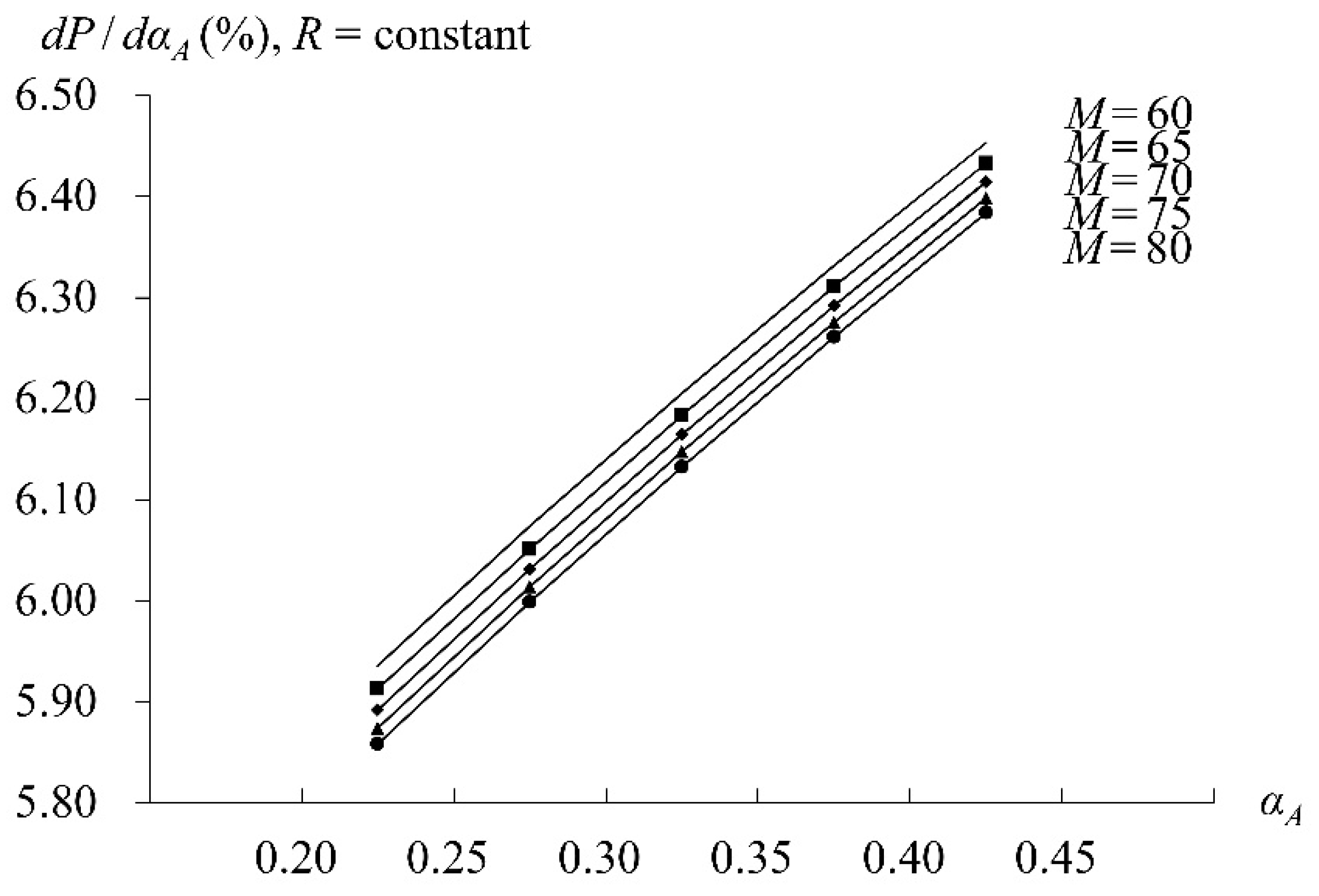
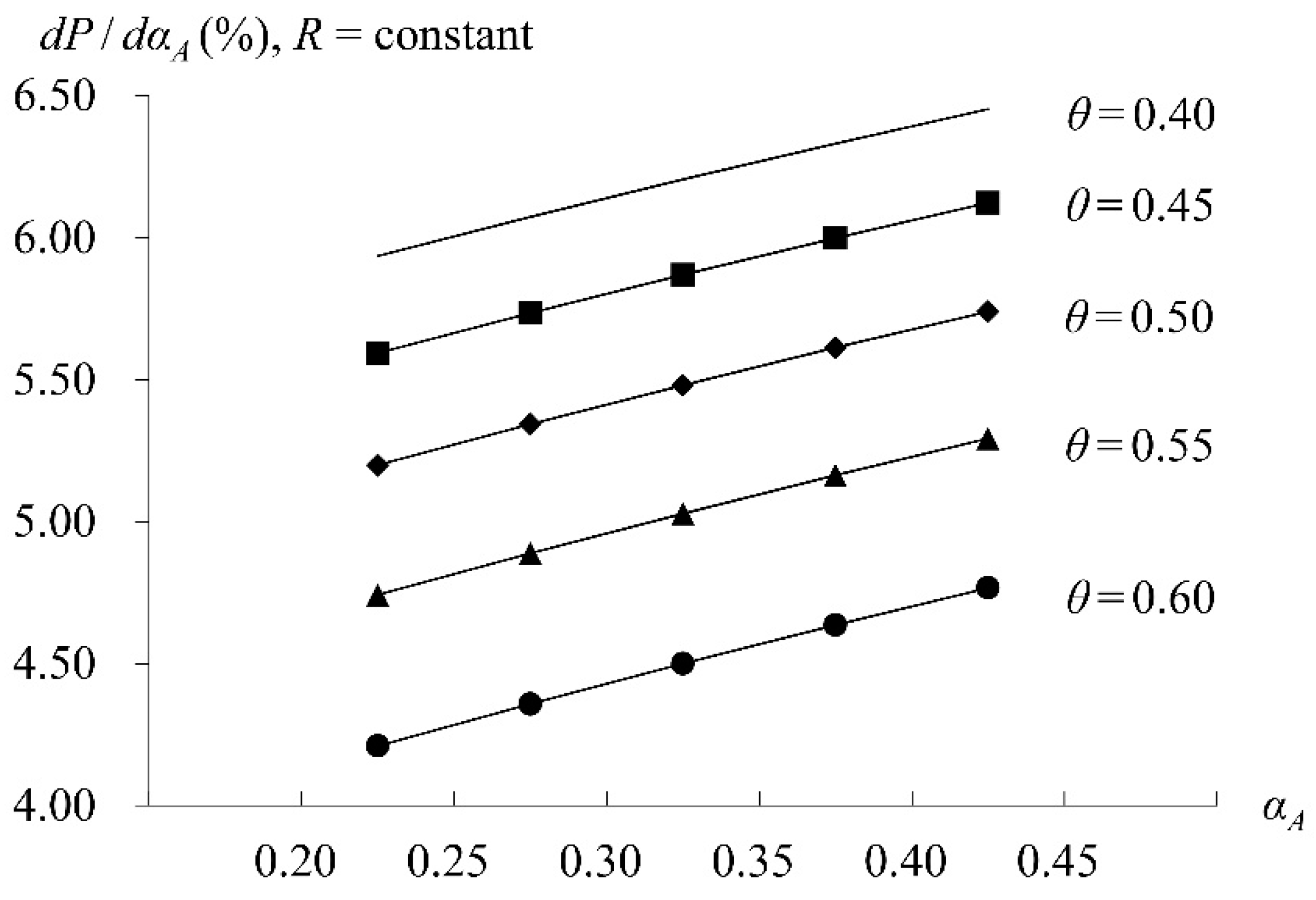
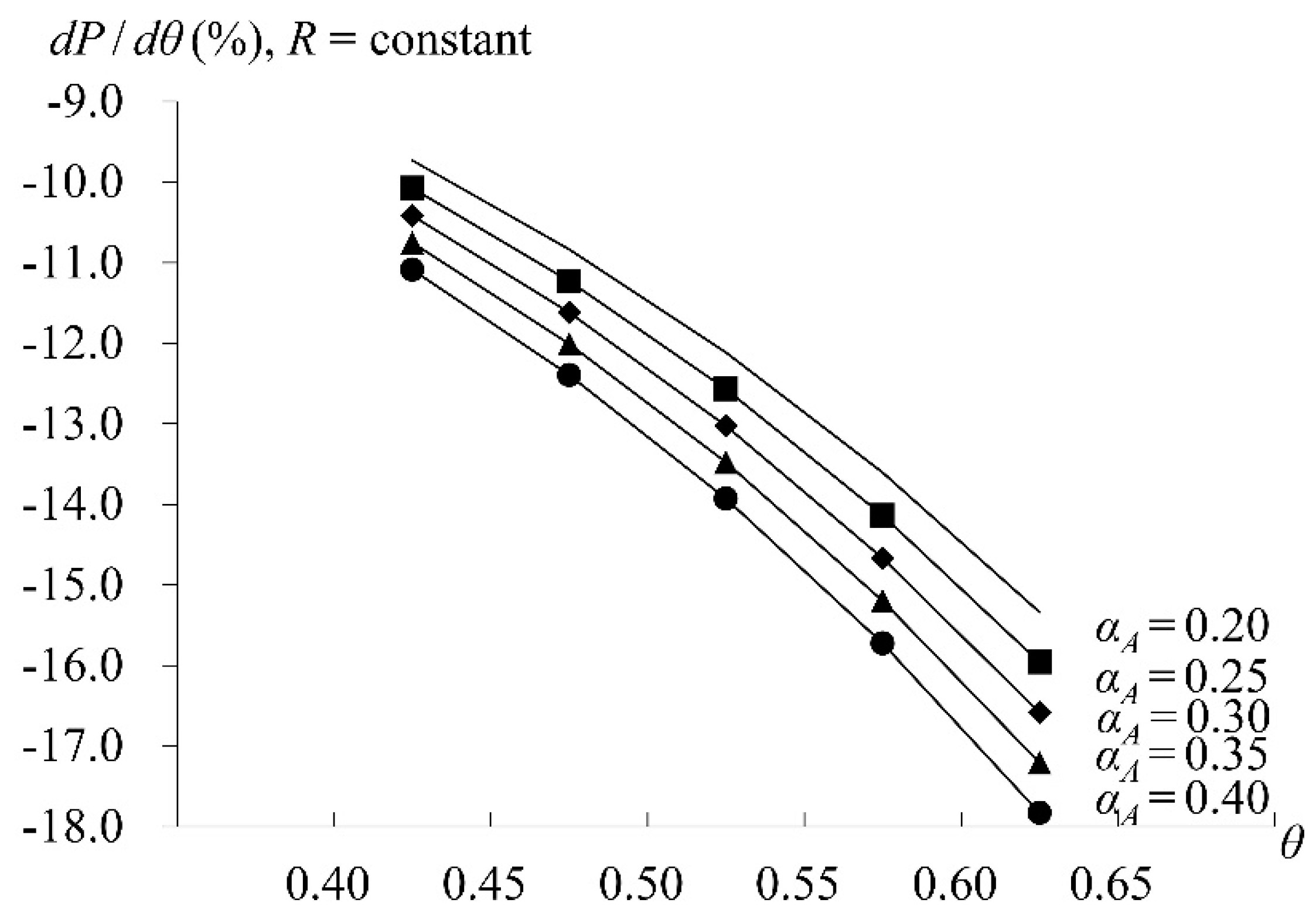
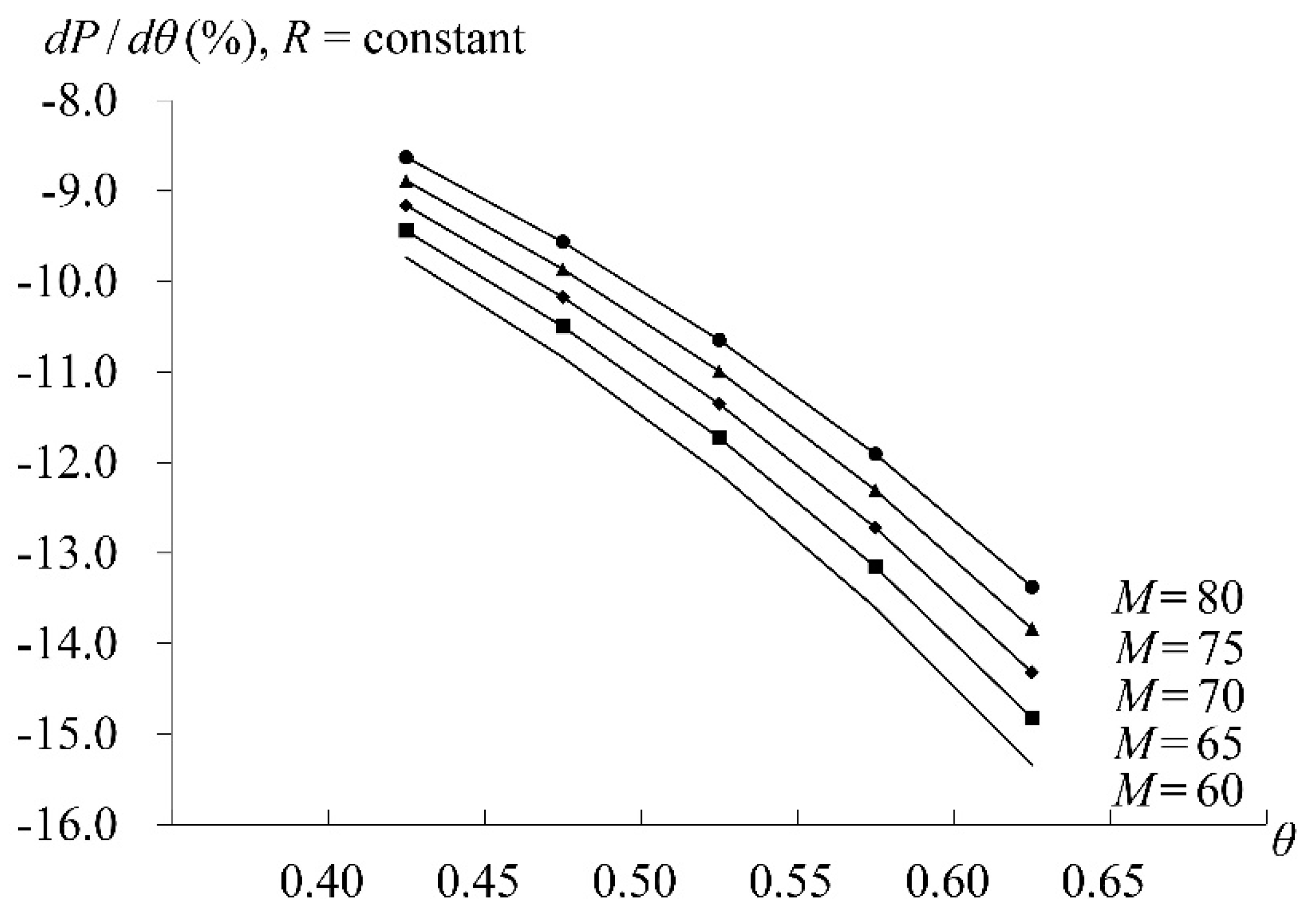
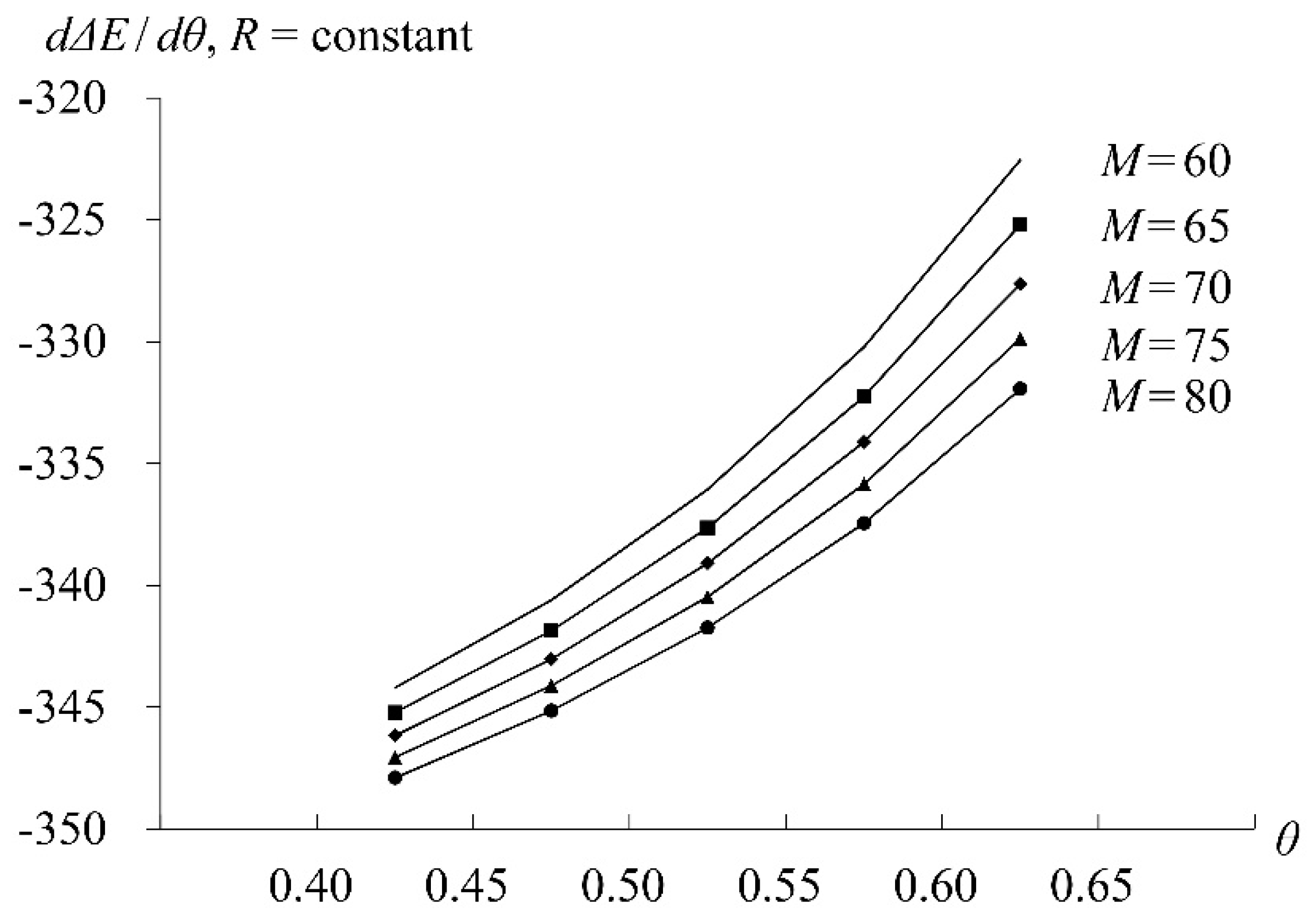
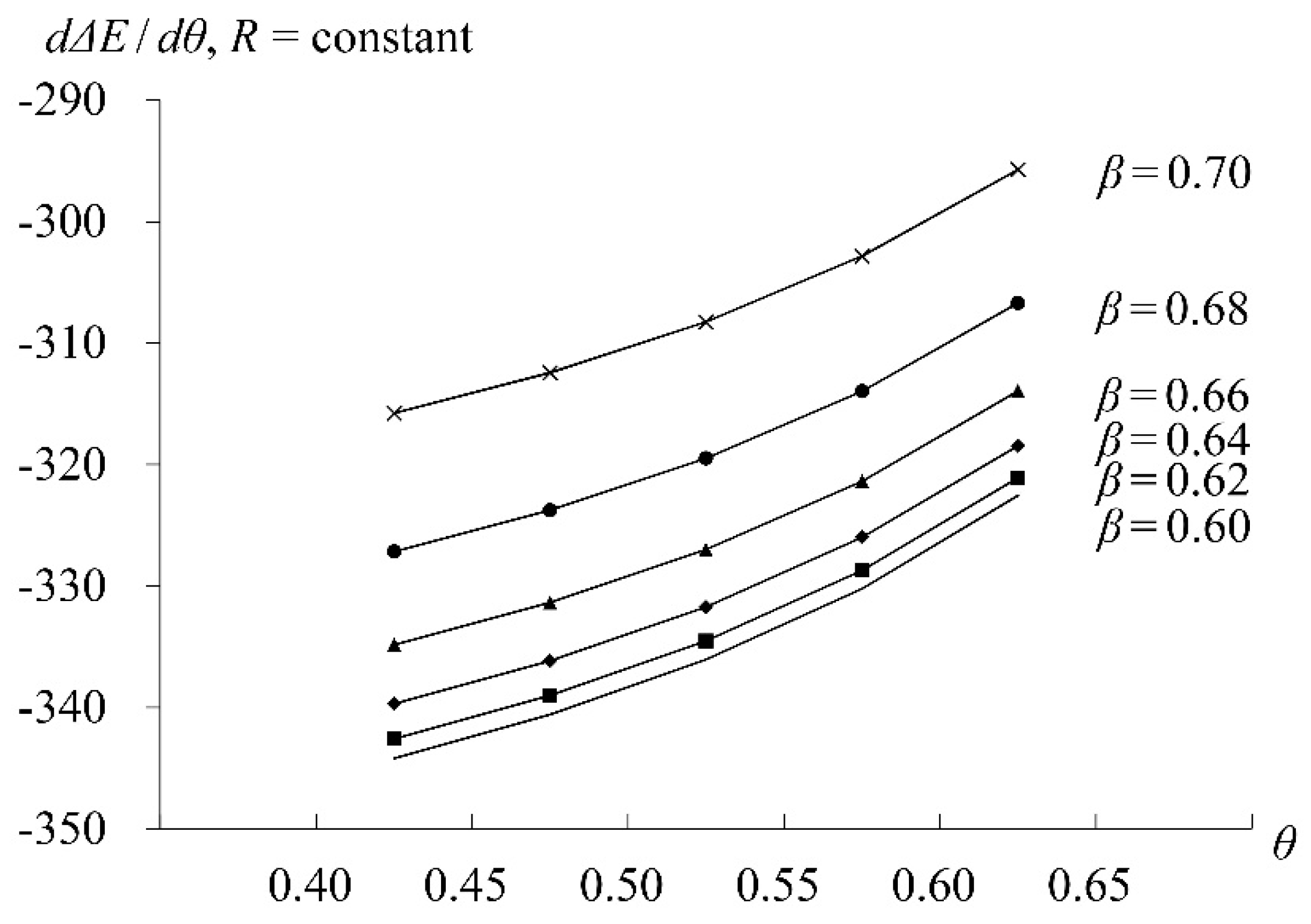
| Assets | Liabilities and Equity | ||
|---|---|---|---|
| Assets | A | Liabilities | |
| Equity | |||
| Total | A | Total | |
| (5.50, 300.5) | (5.60, 300) | (5.70, 299) | (5.80, 297) | (5.90, 293) | (6.00, 285) | (6.10, 269) | |
| 0.20 | 88.6904 | 88.7137 | 88.6163 | 88.2773 | 87.4542 | 85.6613 | 81.9249 |
| 0.25 | 91.5091 | 91.5327 | 91.4309 | 91.0780 | 90.2220 | 88.3579 | 84.4738 |
| 0.30 | 94.3162 | 94.3401 | 94.2339 | 93.8671 | 92.9782 | 91.0433 | 87.0121 |
| 0.35 | 97.1116 | 97.1359 | 97.0253 | 96.6446 | 95.7229 | 93.7173 | 89.5396 |
| 0.40 | 99.8956 | 99.9201 | 99.8050 | 99.4105 | 98.4562 | 96.3802 | 92.0566 |
| 0.45 | 102.6680 | 102.6927 | 102.5732 | 102.1649 | 101.1780 | 99.0319 | 94.5629 |
| (%) | |||||||
| 0.20→0.25 | - | 0.6034 | −3.6332 | −5.7463 | −6.7994 | −7.3230 | - |
| 0.25→0.30 | - | 0.5230 | −3.5086 | −5.5196 | −6.5217 | −7.0200 | - |
| 0.30→0.35 | - | 0.4489 | −3.3935 | −5.3101 | −6.2652 | −6.7402 | - |
| 0.35→0.40 | - | 0.3805 | −3.2868 | −5.1161 | −6.0277 | −6.4811 | - |
| 0.40→0.45 | - | 0.3172 | −3.1876 | −4.9358 | −5.8070 | −6.2403 | - |
| 0.20 | 0.1116 | 0.1111 | 0.1106 | 0.1101 | 0.1098 | 0.1097 | 0.1103 |
| 0.25 | 0.1146 | 0.1141 | 0.1135 | 0.1131 | 0.1127 | 0.1126 | 0.1132 |
| 0.30 | 0.1177 | 0.1171 | 0.1165 | 0.1161 | 0.1157 | 0.1156 | 0.1161 |
| 0.35 | 0.1208 | 0.1202 | 0.1196 | 0.1191 | 0.1188 | 0.1187 | 0.1191 |
| 0.40 | 0.1240 | 0.1234 | 0.1228 | 0.1223 | 0.1219 | 0.1218 | 0.1222 |
| 0.45 | 0.1272 | 0.1266 | 0.1260 | 0.1255 | 0.1251 | 0.1249 | 0.1254 |
| total effect (%), constant | |||||||
| 0.20→0.25 | - | 5.9360 | 5.9304 | 5.9088 | 5.8740 | 5.8210 | - |
| 0.25→0.30 | - | 6.0737 | 6.0678 | 6.0464 | 6.0123 | 5.9607 | - |
| 0.30→0.35 | - | 6.2055 | 6.1993 | 6.1781 | 6.1446 | 6.0944 | - |
| 0.35→0.40 | - | 6.3318 | 6.3253 | 6.3043 | 6.2714 | 6.2225 | - |
| 0.40→0.45 | - | 6.4531 | 6.4464 | 6.4256 | 6.3932 | 6.3455 | - |
| (2.25, 285) | (2.50, 307) | (2.75, 323) | (3.00, 334) | (3.25, 341) | (3.50, 345) | (3.75, 347) | |
| 0.20 | 88.5708 | 93.4583 | 96.7642 | 98.7667 | 99.7374 | 99.9412 | 99.6359 |
| 0.25 | 91.3848 | 96.4723 | 99.9163 | 102.0058 | 103.0230 | 103.2432 | 102.9342 |
| 0.30 | 94.1872 | 99.4741 | 103.0560 | 105.2324 | 106.2963 | 106.5331 | 106.2208 |
| 0.35 | 96.9780 | 102.4638 | 106.1833 | 108.4467 | 109.5573 | 109.8110 | 109.4958 |
| 0.40 | 99.7572 | 105.4415 | 109.2982 | 111.6485 | 112.8061 | 113.0769 | 112.7592 |
| 0.45 | 102.5250 | 108.4071 | 112.4009 | 114.8381 | 116.0427 | 116.3310 | 116.0110 |
| 0.20→0.25 | - | 0.6323 | 0.5298 | 0.4216 | 0.3032 | 0.1607 | - |
| 0.25→0.30 | - | 0.6068 | 0.5088 | 0.4055 | 0.2926 | 0.1572 | - |
| 0.30→0.35 | - | 0.5833 | 0.4894 | 0.3907 | 0.2828 | 0.1539 | - |
| 0.35→0.40 | - | 0.5615 | 0.4715 | 0.3769 | 0.2738 | 0.1509 | - |
| 0.40→0.45 | - | 0.5412 | 0.4549 | 0.3641 | 0.2654 | 0.1481 | - |
| 0.20 | 0.1117 | 0.1147 | 0.1184 | 0.1224 | 0.1269 | 0.1316 | 0.1366 |
| 0.25 | 0.1147 | 0.1178 | 0.1215 | 0.1257 | 0.1302 | 0.1351 | 0.1401 |
| 0.30 | 0.1177 | 0.1209 | 0.1248 | 0.1290 | 0.1337 | 0.1386 | 0.1437 |
| 0.35 | 0.1208 | 0.1242 | 0.1281 | 0.1324 | 0.1372 | 0.1422 | 0.1474 |
| 0.40 | 0.1240 | 0.1274 | 0.1314 | 0.1359 | 0.1407 | 0.1458 | 0.1511 |
| 0.45 | 0.1272 | 0.1308 | 0.1349 | 0.1394 | 0.1443 | 0.1495 | 0.1549 |
| total effect (%), constant | |||||||
| 0.20→0.25 | - | 6.9302 | 7.1201 | 7.2250 | 7.2593 | 7.2087 | - |
| 0.25→0.30 | - | 7.0579 | 7.2425 | 7.3457 | 7.3815 | 7.3361 | - |
| 0.30→0.35 | - | 7.1801 | 7.3597 | 7.4613 | 7.4982 | 7.4576 | - |
| 0.35→0.40 | - | 7.2972 | 7.4720 | 7.5719 | 7.6099 | 7.5736 | - |
| 0.40→0.45 | - | 7.4094 | 7.5797 | 7.6780 | 7.7169 | 7.6846 | - |
| (5.50, 300.5) | (5.60, 300) | (5.70, 299) | (5.80, 297) | (5.90, 293) | (6.00, 285) | (6.10, 269) | |
| 0.40 | 88.6904 | 88.7137 | 88.6163 | 88.2773 | 87.4542 | 85.6613 | 81.9249 |
| 0.45 | 83.5083 | 83.5274 | 83.4345 | 83.1176 | 82.3520 | 80.6871 | 77.2203 |
| 0.50 | 78.3158 | 78.3306 | 78.2424 | 77.9478 | 77.2397 | 75.7035 | 72.5074 |
| 0.55 | 73.1096 | 73.1203 | 73.0368 | 72.7646 | 72.1146 | 70.7077 | 67.7837 |
| 0.60 | 67.8854 | 67.8920 | 67.8133 | 67.5639 | 66.9725 | 65.6959 | 63.0459 |
| 0.65 | 62.6366 | 62.6393 | 62.5657 | 62.3394 | 61.8073 | 60.6624 | 58.2891 |
| (%) | |||||||
| 0.40→0.45 | - | −7.0386 | 3.7524 | 9.1416 | 11.8330 | 13.1769 | - |
| 0.45→0.50 | - | −7.5139 | 4.1159 | 9.9241 | 12.8248 | 14.2724 | - |
| 0.50→0.55 | - | −8.0377 | 4.5715 | 10.8690 | 14.0137 | 15.5819 | - |
| 0.55→0.60 | - | −8.6051 | 5.1620 | 12.0380 | 15.4708 | 17.1803 | - |
| 0.60→0.65 | - | −9.1957 | 5.9607 | 13.5302 | 17.3077 | 19.1845 | - |
| 0.40 | 0.1116 | 0.1111 | 0.1106 | 0.1101 | 0.1098 | 0.1097 | 0.1103 |
| 0.45 | 0.1067 | 0.1062 | 0.1057 | 0.1053 | 0.1050 | 0.1051 | 0.1057 |
| 0.50 | 0.1012 | 0.1008 | 0.1003 | 0.1000 | 0.0997 | 0.0999 | 0.1007 |
| 0.55 | 0.0951 | 0.0947 | 0.0943 | 0.0940 | 0.0938 | 0.0941 | 0.0951 |
| 0.60 | 0.0883 | 0.0879 | 0.0875 | 0.0873 | 0.0872 | 0.0876 | 0.0888 |
| 0.65 | 0.0805 | 0.0802 | 0.0799 | 0.0797 | 0.0797 | 0.0802 | 0.0817 |
| total effect | |||||||
| 0.40→0.45 | - | −0.0973 | −0.0972 | −0.0965 | −0.0954 | −0.0934 | - |
| 0.45→0.50 | - | −0.1084 | −0.1081 | −0.1073 | −0.1060 | −0.1038 | - |
| 0.50→0.55 | - | −0.1212 | −0.1208 | −0.1199 | −0.1184 | −0.1158 | - |
| 0.55→0.60 | - | −0.1361 | −0.1356 | −0.1345 | −0.1328 | −0.1298 | - |
| 0.60→0.65 | - | −0.1534 | −0.1528 | −0.1515 | −0.1495 | −0.1460 | - |
| (2.25, 285) | (2.50, 307) | (2.75, 323) | (3.00, 334) | (3.25, 341) | (3.50, 345) | (3.75, 347) | |
| ( constant) | |||||||
| 0.40 | 88.5708 | 93.4583 | 96.7642 | 98.7667 | 99.7374 | 99.9412 | 99.6359 |
| 0.45 | 83.3974 | 87.9120 | 90.9577 | 92.7928 | 93.6696 | 93.8338 | 93.5248 |
| 0.50 | 78.2136 | 82.3549 | 85.1406 | 86.8089 | 87.5925 | 87.7181 | 87.4063 |
| 0.55 | 73.0162 | 76.7837 | 79.3095 | 80.8117 | 81.5032 | 81.5915 | 81.2782 |
| 0.60 | 67.8008 | 71.1936 | 73.4597 | 74.7968 | 75.3976 | 75.4501 | 75.1370 |
| 0.65 | 62.5609 | 65.5777 | 67.5843 | 68.7573 | 69.2693 | 69.2883 | 68.9777 |
| ( constant) | |||||||
| 0.40→0.45 | - | −1.1789 | −0.9982 | −0.8111 | −0.6126 | −0.3884 | - |
| 0.45→0.50 | - | −1.2706 | −1.0740 | −0.8702 | −0.6536 | −0.4079 | - |
| 0.50→0.55 | - | −1.3788 | −1.1628 | −0.9386 | −0.6998 | −0.4273 | - |
| 0.55→0.60 | - | −1.5087 | −1.2684 | −1.0187 | −0.7518 | −0.4452 | - |
| 0.60→0.65 | - | −1.6686 | −1.3968 | −1.1137 | −0.8102 | −0.4585 | - |
| ( constant) | |||||||
| 0.40 | 0.1117 | 0.1147 | 0.1184 | 0.1224 | 0.1269 | 0.1316 | 0.1366 |
| 0.45 | 0.1068 | 0.1097 | 0.1133 | 0.1174 | 0.1219 | 0.1267 | 0.1317 |
| 0.50 | 0.1013 | 0.1041 | 0.1077 | 0.1118 | 0.1163 | 0.1211 | 0.1263 |
| 0.55 | 0.0952 | 0.0979 | 0.1014 | 0.1054 | 0.1100 | 0.1149 | 0.1201 |
| 0.60 | 0.0883 | 0.0908 | 0.0942 | 0.0982 | 0.1028 | 0.1077 | 0.1130 |
| 0.65 | 0.0806 | 0.0829 | 0.0861 | 0.0900 | 0.0945 | 0.0995 | 0.1049 |
| total effect ( constant) | |||||||
| 0.40→0.45 | - | −0.1144 | −0.1152 | −0.1138 | −0.1106 | −0.1058 | - |
| 0.45→0.50 | - | −0.1267 | −0.1281 | −0.1270 | −0.1238 | −0.1186 | - |
| 0.50→0.55 | - | −0.1409 | −0.1432 | −0.1424 | −0.1393 | −0.1338 | - |
| 0.55→0.60 | - | −0.1573 | −0.1608 | −0.1607 | −0.1577 | −0.1519 | - |
| 0.60→0.65 | - | −0.1764 | −0.1814 | −0.1822 | −0.1795 | −0.1734 | - |
| (5.50, 300.5) | (5.60, 300) | (5.70, 299) | (5.80, 297) | (5.90, 293) | (6.00, 285) | (6.10, 269) | |
| ( constant) | |||||||
| 0.40 | 382.6842 | 383.4322 | 383.6164 | 382.6658 | 379.4346 | 371.6220 | 354.6120 |
| 0.45 | 365.5638 | 366.2484 | 366.3970 | 365.4670 | 362.3694 | 354.9185 | 338.7295 |
| 0.50 | 348.6239 | 349.2440 | 349.3552 | 348.4429 | 345.4740 | 338.3754 | 322.9901 |
| 0.55 | 331.9120 | 332.4659 | 332.5374 | 331.6391 | 328.7924 | 322.0341 | 307.4298 |
| 0.60 | 315.4932 | 315.9787 | 316.0076 | 315.1183 | 312.3851 | 305.9513 | 292.0981 |
| 0.65 | 299.4595 | 299.8740 | 299.8561 | 298.9692 | 296.3377 | 290.2065 | 277.0639 |
| total effect ( constant) | |||||||
| 0.40→0.45 | - | −344.2025 | −344.3187 | −344.8459 | −345.1266 | −344.3650 | - |
| 0.45→0.50 | - | −340.6029 | −340.7746 | −341.4050 | −341.8812 | −341.4956 | - |
| 0.50→0.55 | - | −336.0606 | −336.3045 | −337.0674 | −337.7932 | −337.8868 | - |
| 0.55→0.60 | - | −330.2196 | −330.5597 | −331.4968 | −332.5493 | −333.2681 | - |
| 0.60→0.65 | - | −322.5414 | −323.0135 | −324.1863 | −325.6788 | −327.2374 | - |
| (2.25, 285) | (2.50, 307) | (2.75, 323) | (3.00, 334) | (3.25, 341) | (3.50, 345) | (3.75, 347) | |
| ( constant) | |||||||
| 0.40 | 382.1271 | 399.4593 | 409.0159 | 412.3793 | 411.0198 | 406.2966 | 399.4606 |
| 0.45 | 365.0342 | 381.1930 | 389.9318 | 392.7723 | 391.1249 | 386.2899 | 379.4602 |
| 0.50 | 348.1212 | 363.1163 | 371.0382 | 373.3498 | 371.4041 | 366.4444 | 359.6067 |
| 0.55 | 331.4355 | 345.2799 | 352.3864 | 354.1622 | 351.9052 | 346.8041 | 339.9401 |
| 0.60 | 315.0418 | 327.7539 | 334.0481 | 335.2795 | 332.6946 | 327.4307 | 320.5169 |
| 0.65 | 299.0321 | 310.6385 | 316.1261 | 316.8026 | 313.8683 | 308.4133 | 301.4180 |
| total effect ( constant) | |||||||
| 0.40→0.45 | - | −447.0598 | −419.8383 | −403.0517 | −394.5667 | −392.7941 | - |
| 0.45→0.50 | - | −443.6601 | −415.4157 | −398.3368 | −390.1077 | −389.0221 | - |
| 0.50→0.55 | - | −439.4267 | −409.8815 | −392.4324 | −384.5324 | −384.3285 | - |
| 0.55→0.60 | - | −434.0668 | −402.8217 | −384.8895 | −377.4238 | −378.3831 | - |
| 0.60→0.65 | - | −427.1525 | −393.6093 | −375.0231 | −368.1493 | −370.6963 | - |
© 2019 by the authors. Licensee MDPI, Basel, Switzerland. This article is an open access article distributed under the terms and conditions of the Creative Commons Attribution (CC BY) license (http://creativecommons.org/licenses/by/4.0/).
Share and Cite
Chen, S.; Lin, J.-H.; Yao, W.; Huang, F.-W. CEO Overconfidence and Shadow-Banking Life Insurer Performance Under Government Purchases of Distressed Assets. Risks 2019, 7, 28. https://doi.org/10.3390/risks7010028
Chen S, Lin J-H, Yao W, Huang F-W. CEO Overconfidence and Shadow-Banking Life Insurer Performance Under Government Purchases of Distressed Assets. Risks. 2019; 7(1):28. https://doi.org/10.3390/risks7010028
Chicago/Turabian StyleChen, Shi, Jyh-Horng Lin, Wenyu Yao, and Fu-Wei Huang. 2019. "CEO Overconfidence and Shadow-Banking Life Insurer Performance Under Government Purchases of Distressed Assets" Risks 7, no. 1: 28. https://doi.org/10.3390/risks7010028
APA StyleChen, S., Lin, J.-H., Yao, W., & Huang, F.-W. (2019). CEO Overconfidence and Shadow-Banking Life Insurer Performance Under Government Purchases of Distressed Assets. Risks, 7(1), 28. https://doi.org/10.3390/risks7010028





